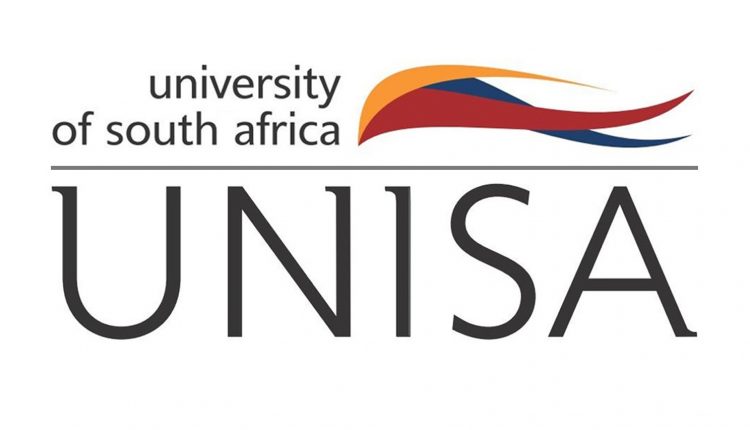University of South Africa: Digital education for society
Cleveland-Innes is the principal researcher on the Community of Inquiry framework for online and blended learning at Athabasca. With her scholarly work underpinned by evidence-based practice founded on sound theory, her view is that high-quality education is critical to developing healthy societies with a well-developed citizenry.
An introduction to the community of inquiry
In providing context to the Community of Inquiry framework, Cleveland-Innes defined an educational community of inquiry as a group of individuals who collaboratively engage in purposeful critical discourse and reflection to construct personal meaning and confirm mutual understanding.
She characterised this as a valuable and effective approach to teaching and learning, both online and in person. Taking such an approach to collaborative, purposeful engagement may also support transformative leadership in education as a new social contract for open, digital education in society is created.
The Community of Inquiry (CoI) framework theory, methodology and instruments were developed during a Canadian Social Sciences and Humanities research-funded project entitled A Study of the Characteristics and Qualities of Text-Based Computer Conferencing for Educational Purposes, which ran from 1997 to 2001.
Model of a community of inquiry
Central to the original study was creating a model of a community of inquiry comprised of three essential elements: cognitive, social and teaching. While this model was initially designed to work in a text-based online environment, notions of a community of inquiry predate the application in online environments and, since its inception, have been applied in many different settings.
In breaking down the three essential elements, Cleveland-Innes explained that social presence refers to the ability of participants to identify with the community (eg course of study), communicate purposefully in a trusting environment and develop interpersonal relationships by way of projecting their personalities.
On the other hand, cognitive presence is the extent to which learners are able to construct and confirm meaning through sustained reflection and discourse in a critical community of inquiry. She said this was “In the sense that it’s okay to ask questions or say, ‘what does this mean?’, or even say, ‘well, I don’t agree.”
Teaching presence is the design, facilitation and direction of cognitive and social processes to realise personally meaningful and educationally worthwhile learning outcomes.
Regarding theoretical foundations, Cleveland-Innes believes that social interaction leads to a socialisation pattern. Socialisation is the ongoing process of learning the expected behaviours, values, norms and skills of different roles played in the world, including the role of a learner. This socialisation process, with all other things being equal, influences how students approach their learning. The interaction required in a community of inquiry leads to deep learning.
Providing insight into the community of inquiry and understanding its application
Cleveland-Innes and Dr Randy D Garrison (Professor Emeritus, University of Calgary in Canada) – the key minds behind the community of inquiry – have continued with this line of thinking and the use of the community of inquiry to test interaction toward deep learning in a community of inquiry.
They have established a brand-new community of inquiry space at https://www.thecommunityofinquiry.org/ – one designed for and by researchers and practitioners. According to Cleveland-Innes, the repository is where articles that provide insight into and understanding of the application of the community of inquiry are discussed and, where possible, are uploaded to the website.
The community of inquiry has been tested extensively and has achieved significant empirical outcomes. Outcomes of the original project were published in peer-reviewed journals, resulting in hundreds of research studies applying and extending the original CoI theory, method and instruments.
Noting that a seminal paper titled Critical Inquiry in a Text-Based Environment: Computer Conferencing in Higher Education has been cited more than 8 000 times, Cleveland-Innes further stated that the value of the community of inquiry has the potential to provide effective learning experiences in computer-based online education spaces.
Athabasca University, in partnership with the Commonwealth of Learning, has constructed Massive Open Online Courses (MOOCs) employing a scaled version of the community of inquiry. For example, the Leading Change in Teaching and Learning for a Digital World MOOC (https://www.lctl.org/) is a free offering open to educators, course design leaders and people involved in education reform.
“We have now worked with well over 4 000 participants from all over the world in this particular massive open online course,” she said. Cleveland-Innes added that the views they are getting have gone across contexts and linguistic communities to many different places worldwide.
In addition, a recently revised guide to Blended Learning Practice (https://www.blpmooc.org/) is freely available through the Athabasca University Press. It provides guidance on applying the community of inquiry and bridging the gap between the online and more traditional learning spaces.
Cleveland-Innes concluded her presentation by speaking on the tale of new pedagogies. She reflected on what happened during the Covid-19 pandemic, where the emergency remote teaching did not allow for consideration of the individuals involved. “We also learned that teacher-driven, content-focused and transmission models don’t translate well into online spaces. Online spaces are meant to be connected and collaborative,” she stated.
The community of inquiry itself uses technology to support blended learning that has flexibility and personalisation for students, allowing them to learn in their way at their own pace. It also allows activity monitoring by the teacher through learning analytics and electronic assignment submissions. Cleveland-Innes emphasised that what the students do in person must be linked to what they do online and vice versa. She concluded that well-timed feedback, balanced with supported learner independence, is a keystone of successful blended learning.

